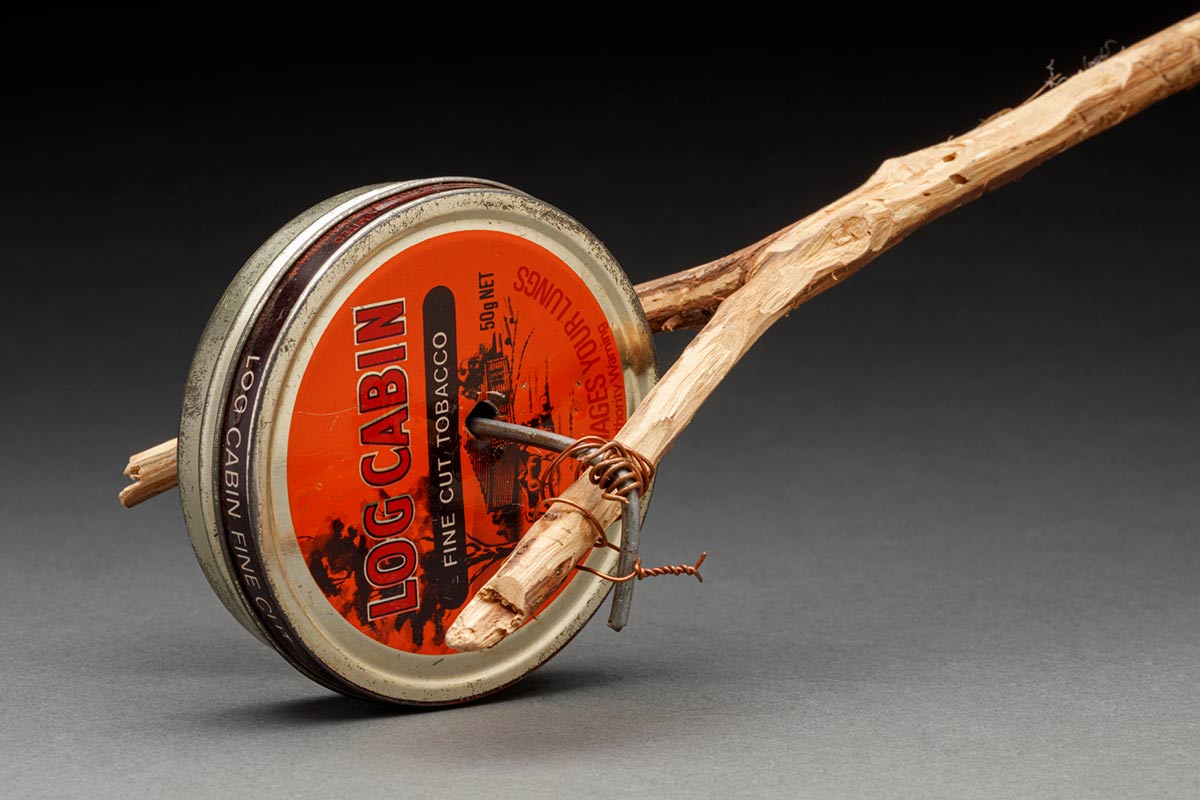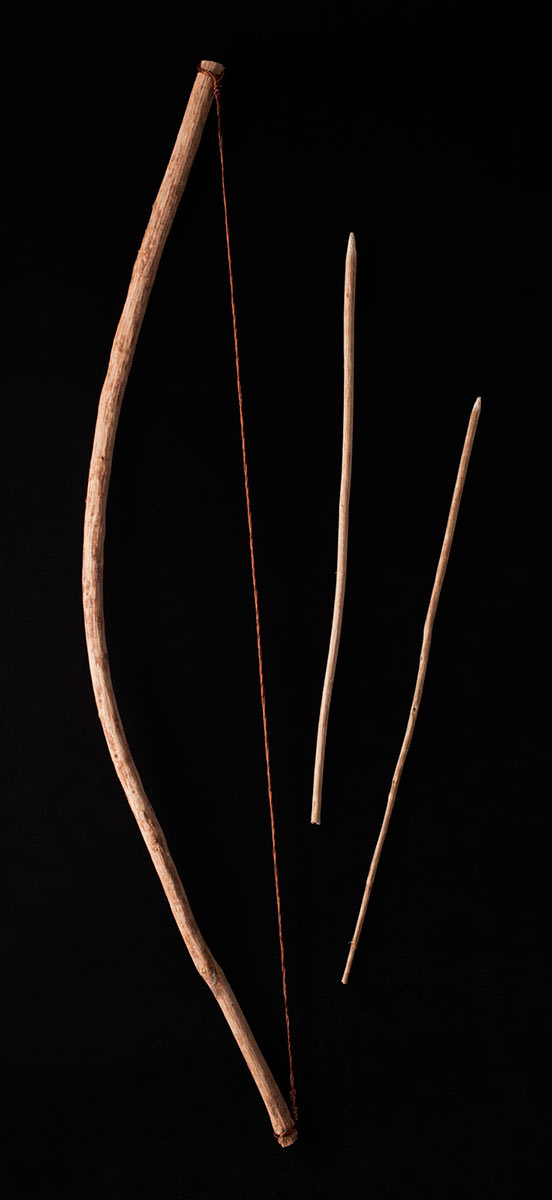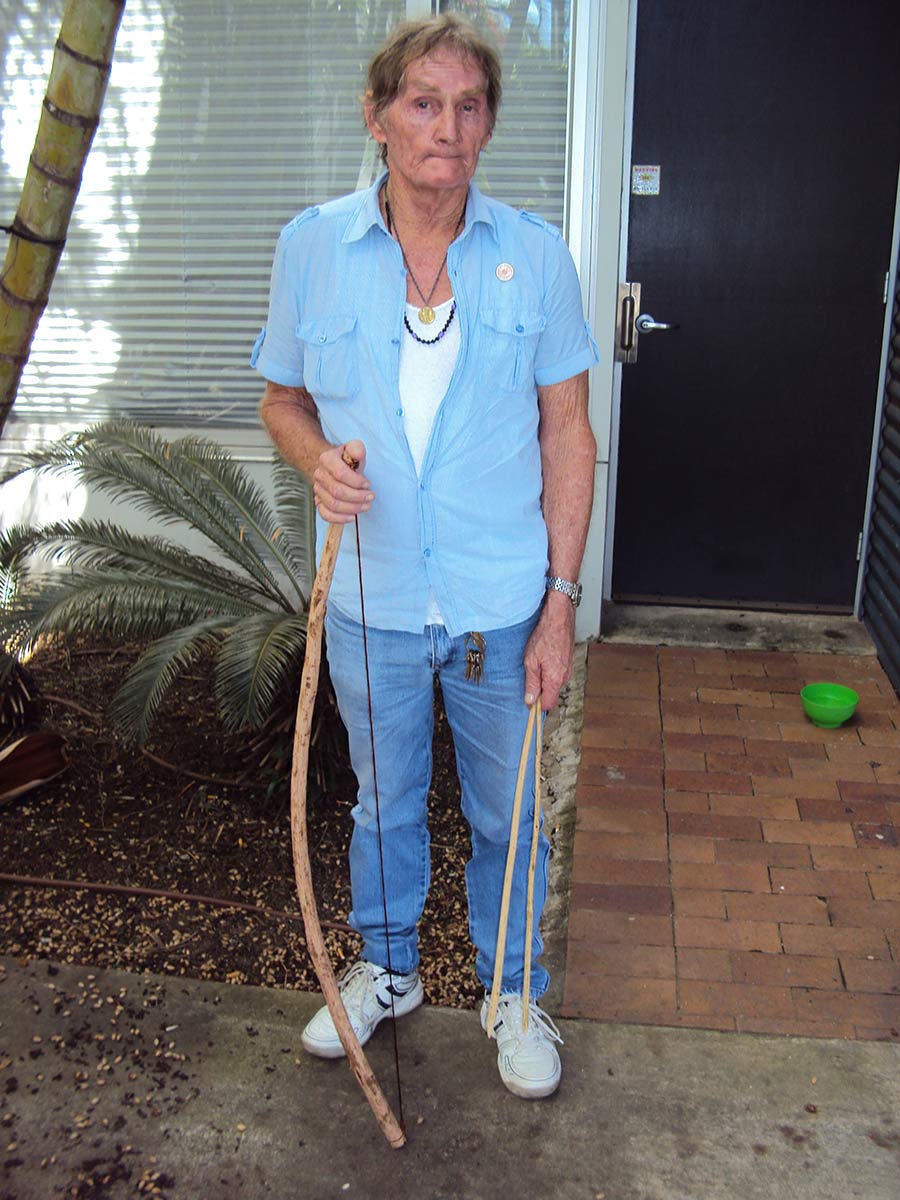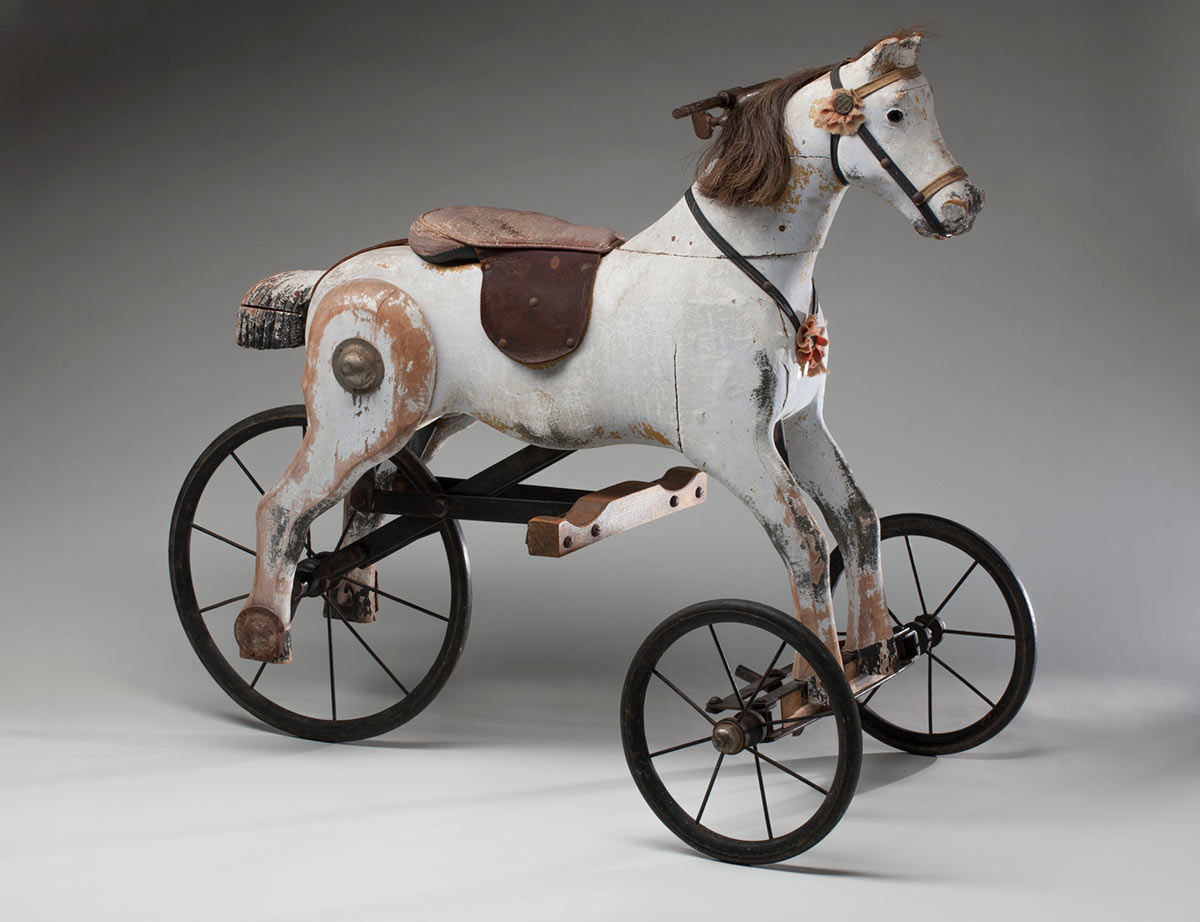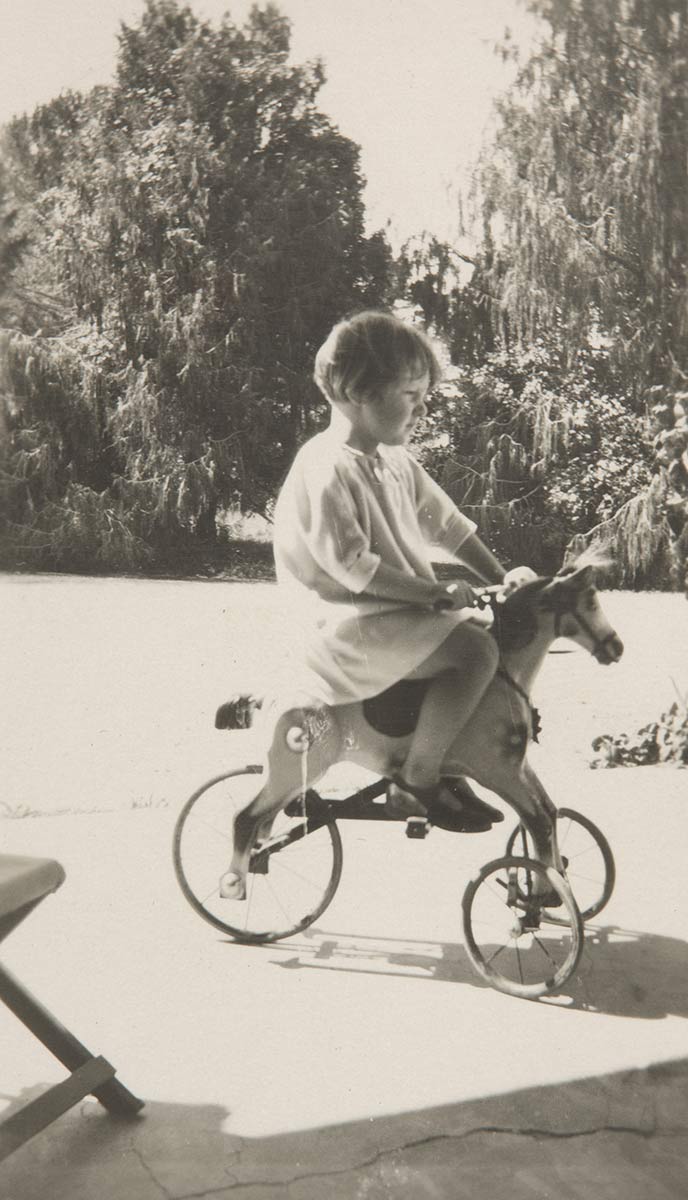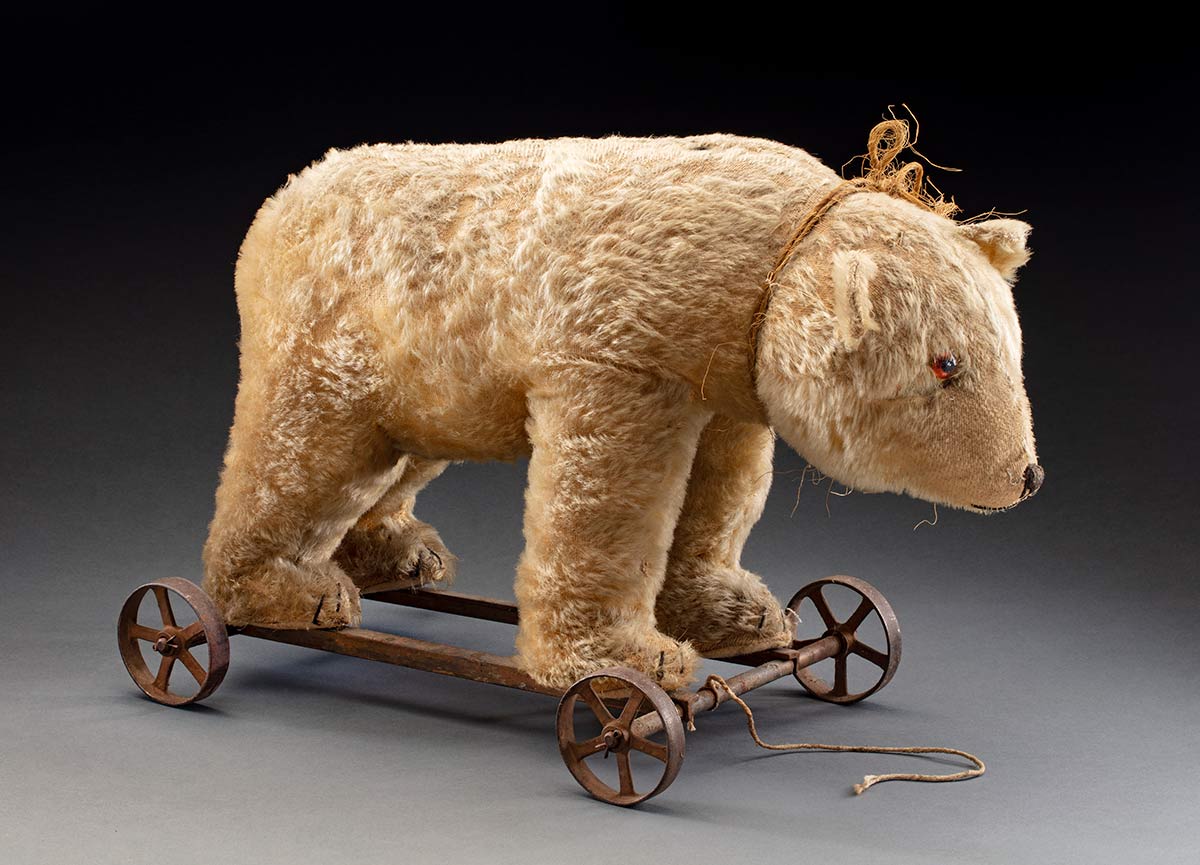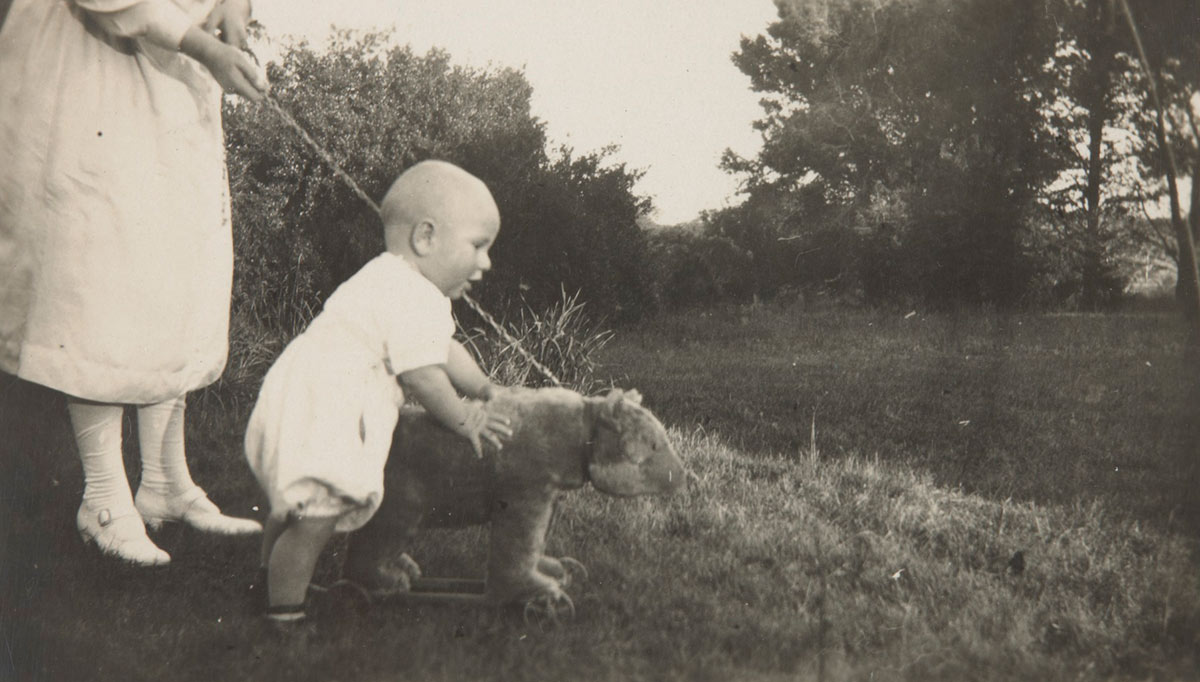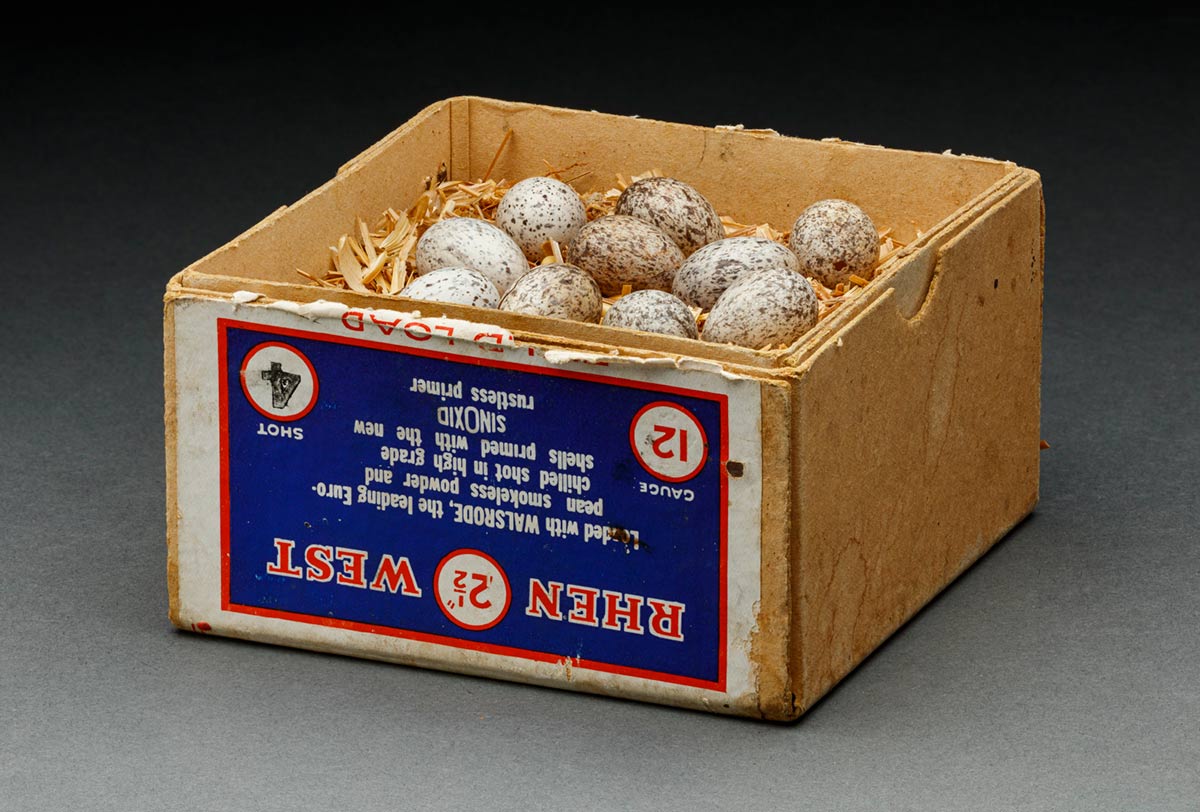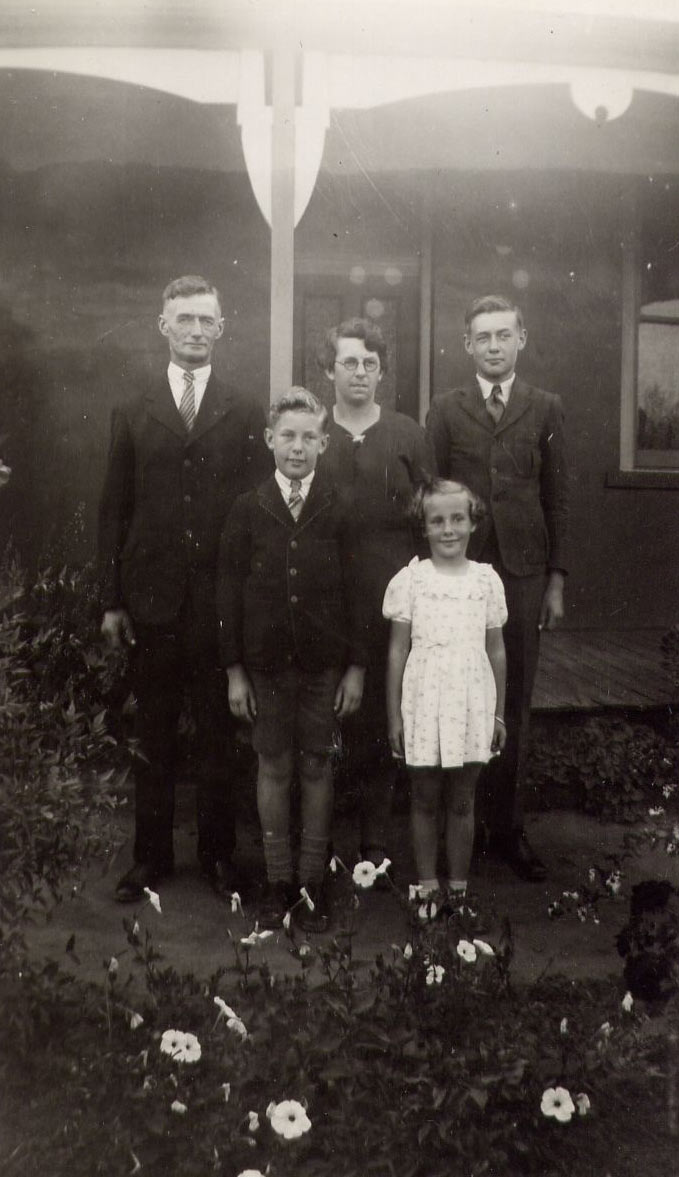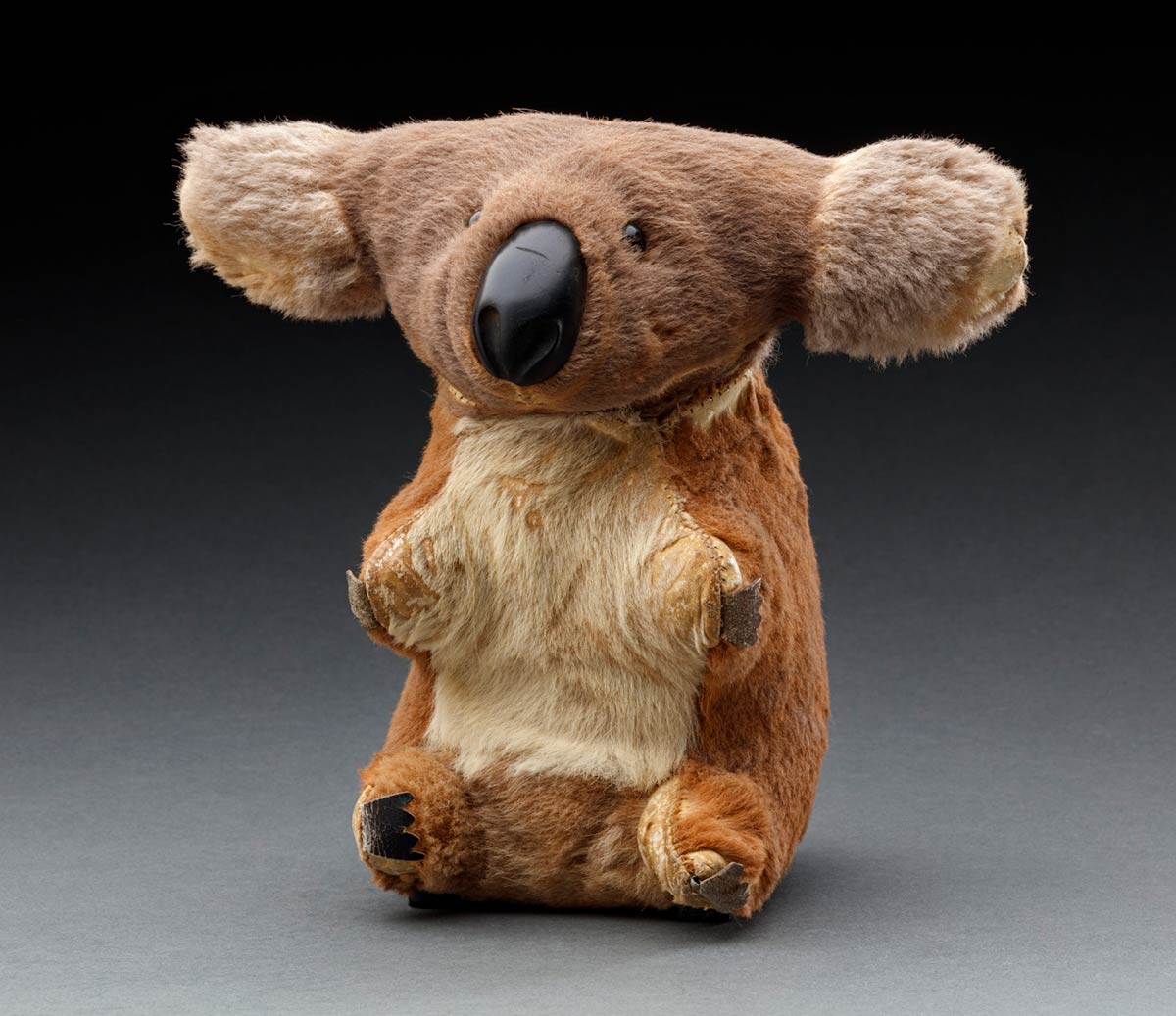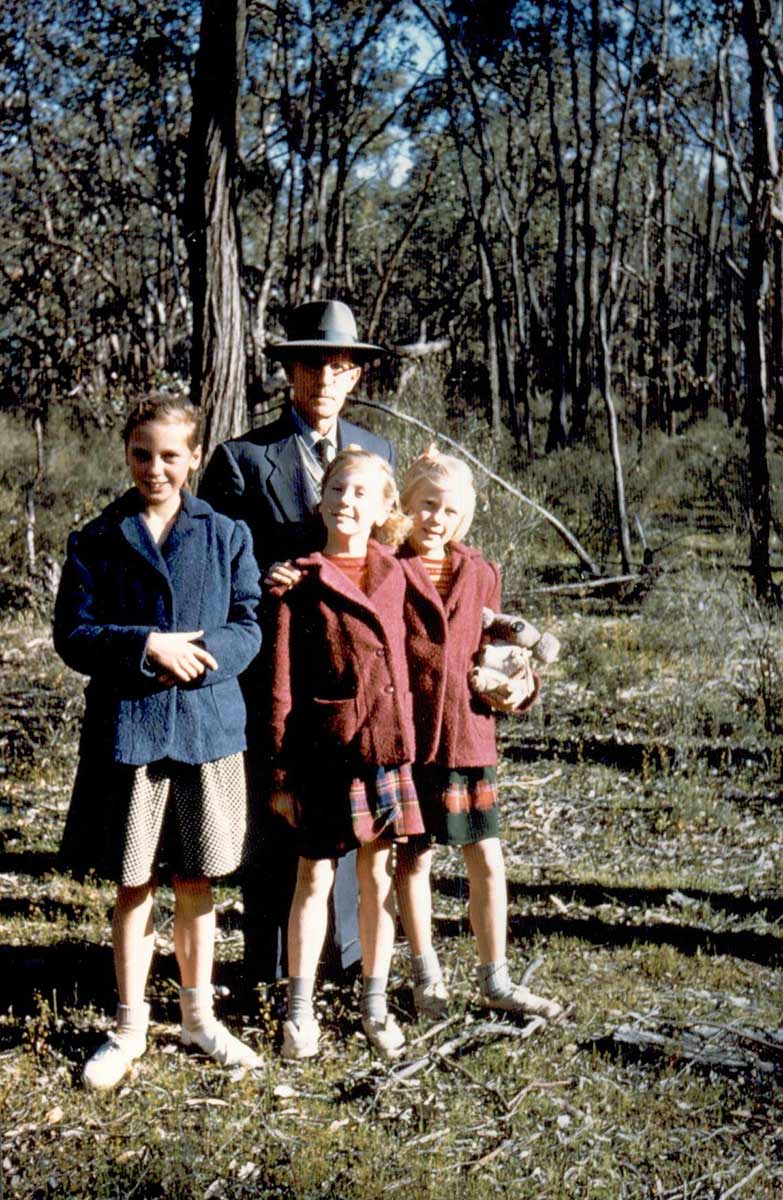Children explored the outdoors while playing games in many different ways. Toys were a way of discovering and creating new adventures.
Ashley’s push-along car, 1990s
Claudia Haagen, Bush Toys, 1994:
[Bush toys are] constructed from material readily available, the empty powdered food tins, wire, string, and wheel rims.
This push-along car was made in 1992 by Ashley Charlie, a young boy living in Borroloola in Yanyuwa Country in the Northern Territory.
After stripping old insulation cables and extracting the copper wire, Ashley used a screwdriver and a rock to punch a hole through the side of a tin and lashed it to a handle with the wire. The tin could then have been filled with gravel for stability.
Bryan’s bow and arrows, 1950s
Bryan, 2021:
It was a big, wide creek with scrubby bush and grass along the banks. Some places were deep, but others had rapids. We’d play games like hide-and-seek and make bows and arrows.
This bow and arrow set was made in 2011 by Bryan, a Brisbane man aged in his 60s. Working from memory, he replicated a set that he had made as a young boy.
Bryan had lived at St Joseph’s Orphanage, an institution that operated between the 1940s and 1970s at Neerkol near Rockhampton, Queensland. He seldom played. Many children living at this and other institutions around Australia were cruelly abused or neglected.
For Bryan, the bow and arrows represent rare moments of freedom when he went down to Neerkol Creek to play. He didn’t use them to kill things, just to shoot.
Susan’s horse tricycle, 1920s
Advertisement for horse tricycles by Hutchison’s of Sydney, 1907:
The youthful equestrian mounts his steed, and then away to Fairyland on flying wheels.
This horse tricycle belonged to Susan Gibson, who grew up during the 1920s at Burrungurroolong, a pastoral property near Goulburn, New South Wales.
Toys like this helped children learn tricky balancing and pedalling skills and gave them a chance to experience the unbridled thrill of momentum.
Like many children who grew up on rural properties, Susan and her brother Andrew learnt to ride ponies from a young age. Susan, however, was allowed to give up riding after her parents, Jill and Norman, realised she was afraid of horses. Of course, she never had anything to fear from this gentle steed.
Andrew’s pull-along bear, 1920s
Advertisement for pull-along bears by Farmer’s of Sydney, 1927:
Favourite Pull-along Bears, best quality fur; have a throaty growl.
This pull-along bear belonged to Andrew Gibson, who grew up during the 1920s at Burrungurroolong, a pastoral property near Goulburn, New South Wales.
As a toddler, Andrew explored his home and garden with his furry friend. He discovered new sights, sounds, smells and textures with this toy by his side.
This bear was well-loved and often repaired. You may notice that his ears have been reattached back-to-front. We are not certain whether he originally had a throaty growl, as the advertisement suggests, but he is quiet now.
John’s egg collection, 1940s
John Grosse, 2020:
I loved going to visit my Scholz grandparents’ farm. It was there where I and my cousin Cliff used to collect birds’ eggs from the nests.
These birds’ eggs were collected by John Grosse during the 1940s, when he was about 8 or 9 years old. John’s grandparents’ farm at Culcairn in the Riverina district of New South Wales was home to a diverse array of birds, including sparrows, finches, pigeons, plovers, swallows, starlings and curlews.
Once a common hobby, collecting and arranging eggs was considered part of an education in natural history. It was also hard work. Children like John went to great lengths, scaling houses and sheds, crawling under verandahs and climbing trees in search of hidden nests.
John also learnt about protecting birdlife as a member of the Gould League, an ornithology program that was part of the New South Wales primary school curriculum.
Nola’s koala, 1950s
Nola Firth, 2020:
I had two teddy bears and a doll who lived in my bedroom but Bear came out with me on my adventures.
This koala was given to Nola Firth in 1956, when she was 6 or 7 years old. Nola’s father, who ran a newsagency and gift shop in Beechworth, Victoria, had bought the toy to sell in his shop. However, Nola’s mother was so taken with the koala that she gave it to her daughter instead.
Nola cared deeply for animals, and ‘Bear’ soon became her companion. Every fearless explorer needs a trusty sidekick, and the pair had many adventures together. Bear’s hard nose and spiky feet made hugs a little uncomfortable, but Nola didn’t mind.
Explore more Play
You may also like
